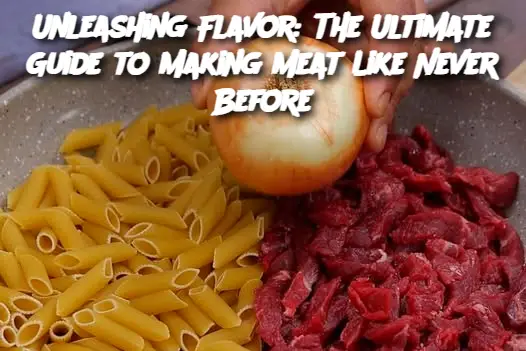Perfecting the Sear: Heat a skillet or grill pan over medium-high heat. Add a little olive oil or butter to the pan and allow it to heat up. When it’s sizzling, place your meat in the pan, ensuring it’s not overcrowded. Sear the meat for 2-3 minutes on each side until a golden, crispy crust forms. This caramelization locks in the flavors and juices.
Cooking to Perfection: After searing, lower the heat to medium and continue cooking until the desired level of doneness is reached. For a medium-rare steak, aim for an internal temperature of around 130°F (54°C). Use a meat thermometer for precision. For chicken, cook until the internal temperature reaches 165°F (74°C). If using the oven, preheat it to 375°F (190°C) and roast for 15-20 minutes, depending on the meat and thickness.
Resting: Once the meat is cooked to perfection, let it rest for about 5-10 minutes. This allows the juices to redistribute, ensuring the meat remains tender and moist when sliced.
Serving: Slice the meat against the grain to maximize tenderness, and garnish with fresh herbs. Serve with your favorite sides like roasted vegetables, mashed potatoes, or a fresh salad. For a more elevated touch, drizzle with a bit of balsamic glaze or a squeeze of fresh lemon juice.
Tips for Serving and Storing:
Serving: Serve the meat immediately after resting, ensuring it’s still warm. Pair it with a robust red wine (like Cabernet Sauvignon for beef) or a crisp white wine (such as Chardonnay for chicken). A light sauce like chimichurri or a homemade gravy can complement the meat beautifully.
Storing: If you have leftovers, store them in an airtight container in the fridge for up to 3 days. To reheat, gently warm the meat in a skillet over low heat to avoid drying it out. For a quicker option, you can also microwave it with a damp paper towel over it to retain moisture.
Variants:
Grilled Meat with Smoky Flavor: If you prefer grilled meat, fire up your barbecue and cook the meat over direct heat for a smoky flavor. Use wood chips like hickory or applewood for an added depth of flavor. Marinate the meat in a spicy rub or dry seasoning mix for an extra kick.
Slow-Cooked Meat: For tender, fall-apart meat, consider slow-cooking or braising tougher cuts like chuck roast or pork shoulder. After searing, simmer the meat in a flavorful broth or wine for several hours until it becomes fork-tender.
Stuffed Meat: For a more indulgent take, try stuffing your meat with ingredients like spinach, cheese, garlic, or mushrooms. For example, stuffed chicken breasts or a stuffed flank steak can offer a delicious and juicy meal with an exciting twist.
Vegetarian Alternative: If you prefer a plant-based option, portobello mushrooms can be grilled or sautéed in a similar fashion to meat. They have a rich, umami flavor and a satisfying texture, perfect for vegetarians or those reducing meat consumption.
FAQ:
How do I make sure my meat stays tender? The key to tender meat lies in the cooking technique. Searing meat quickly at a high temperature helps lock in moisture, while cooking at a lower temperature afterward prevents it from drying out. Additionally, using a marinade with acidic ingredients (like vinegar or lemon) can help tenderize tougher cuts.
Can I cook meat without searing it first? While searing is recommended for a crispy, flavorful crust, it’s not absolutely necessary. If you’re making a slow-cooked dish, such as braised meat or stew, you can skip the searing step. However, searing helps create a more intense flavor.
What’s the best way to tell if my meat is cooked to the right level? Using a meat thermometer is the most accurate way to check for doneness. For beef, aim for 130°F for medium-rare, 140°F for medium, and 150°F for medium-well. For chicken, ensure the internal temperature reaches 165°F. Always check at the thickest part of the meat.
How can I avoid overcooking my meat? The best way to prevent overcooking is to monitor the internal temperature with a thermometer and remove the meat from the heat source a few degrees before it reaches your target temperature. Let it rest afterward, as the temperature will continue to rise slightly.
Can I use this technique for fish or seafood? Yes! This method works for fish and seafood as well, though you’ll need to adjust the cooking time. Fish cooks quickly, so be sure to monitor closely to avoid overcooking. A seared salmon fillet or grilled shrimp works wonderfully with similar seasoning techniques.
By following these techniques and tips, you can transform even the simplest cut of meat into a flavorful, tender dish that will impress every time. With a few simple steps and a little practice, you’ll be making meat like never before—full of flavor, juicy, and cooked to perfection!
ADVERTISEMENT

